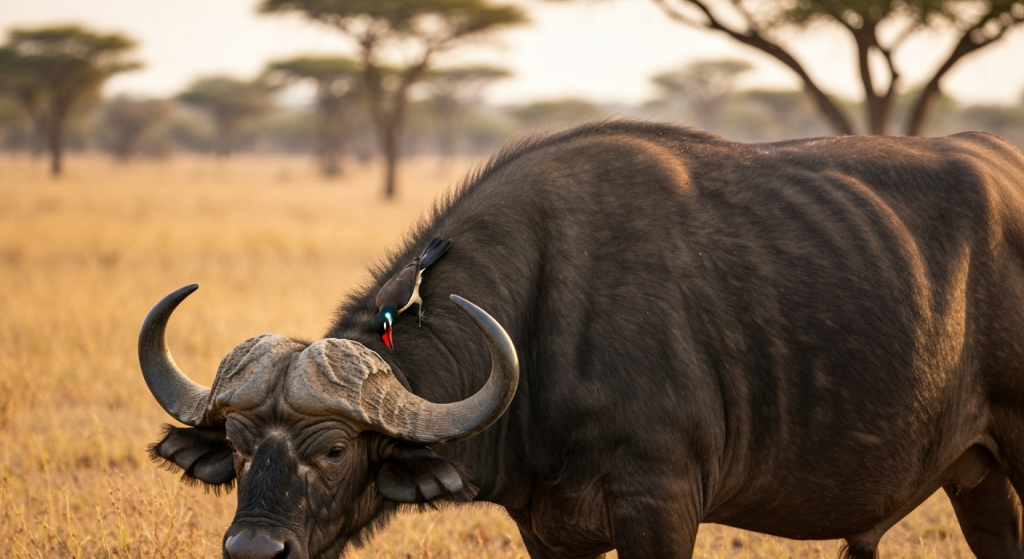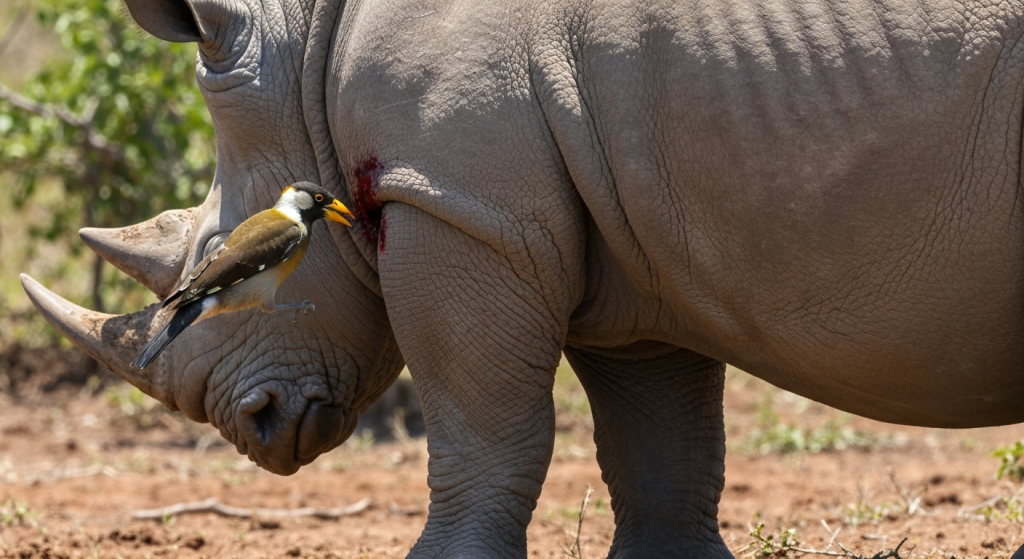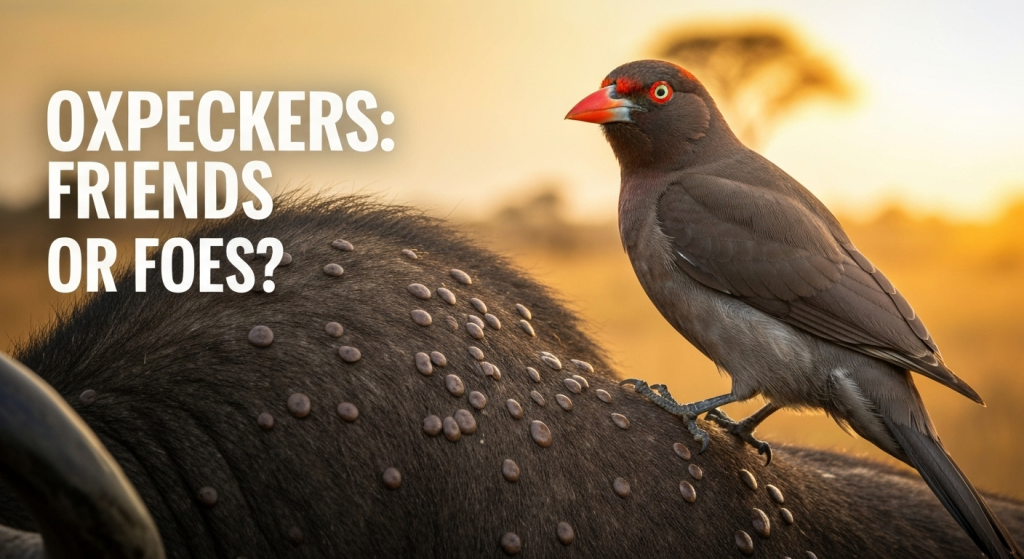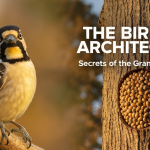Ever watched a nature documentary and seen a small bird casually riding on the back of a massive Cape buffalo or a rhino? It’s a classic image of the African savanna. These birds are oxpeckers, and their relationship with these giant mammals is one of nature’s most fascinating and debated partnerships. It looks like a simple cleaning service, but the truth is a lot more complicated. Is it a perfect friendship, a one-sided deal, or something in between? This question has puzzled scientists and nature lovers for decades.
My name is Mahnoor Farooq, and for years, I’ve been captivated by the intricate lives of birds. My work has taken me from dusty library archives to the quiet observation of wildlife, always driven by a deep curiosity about how these creatures interact with their world. I’ve spent countless hours piecing together research and field notes to understand the delicate balances within ecosystems. Sharing these stories, like the complex partnership between oxpeckers and savanna giants, is my passion. My goal isn’t just to present facts but to connect them to the bigger picture, helping readers see the beautiful and sometimes strange logic of the natural world.
What is the Oxpecker-Mammal Relationship?
At its core, the relationship between oxpeckers and large mammals like rhinos, buffalo, giraffes, and zebras is a form of symbiosis. This is just a scientific term for two different species living closely together. But symbiosis isn’t always a happy, two-way street. It can take a few different forms, and the oxpecker’s story is a perfect example of how blurry the lines can get.
For a long time, this partnership was considered a textbook example of mutualism, where both parties benefit. The oxpecker gets a full meal, and the mammal gets a top-notch cleaning service that removes nasty pests. In theory, everyone wins. However, as researchers have looked closer, they’ve found evidence that complicates this simple picture. Some of the oxpecker’s habits suggest the relationship can sometimes lean towards parasitism, where one benefits at the other’s expense. Let’s break down what’s really happening on the backs of these magnificent animals.
The Two Sides: Mutualism vs. Parasitism
Understanding this dynamic means looking at the specific actions of the oxpecker and their effects on the host mammal. It’s not a simple black-and-white issue; it’s a spectrum of behaviors that can change depending on the situation. Think of it like a business partnership—sometimes it’s perfectly balanced, and other times, one partner starts taking a little more than they give.
| Aspect of Interaction | Mutualistic View (Helpful) | Parasitic View (Harmful) |
| Feeding | Oxpeckers eat ticks and other parasites, removing disease-carrying pests from the host’s skin. | Oxpeckers also feed on blood from existing wounds, which can prevent them from healing properly. |
| Grooming | The birds’ pecking provides a grooming service, cleaning hard-to-reach areas. | Their sharp beaks can create new wounds or enlarge existing ones to encourage more blood flow. |
| Alarm System | Oxpeckers hiss and scream when they spot predators, acting as an early warning system for the host. | This benefit might not outweigh the potential harm from their feeding habits. |
| Overall Impact | The host becomes healthier and safer due to pest removal and predator alerts. | The host suffers from delayed wound healing and potential skin infections, losing valuable blood. |
This table shows the central debate. The very same actions can be interpreted in two completely different ways. The key is figuring out which side of the line the relationship falls on most of the time.
The Cleaning Crew: A Mobile Feast for Oxpeckers

The main reason oxpeckers spend their lives on these animals is simple: food. The hides of African herbivores are a walking buffet. They are covered in ticks, flies, lice, and other parasites that provide a constant source of protein. An adult oxpecker can eat hundreds of ticks in a single day, a service that seems undeniably helpful.
What’s on the Menu?
Oxpeckers aren’t picky eaters, but they have their favorites. Their primary food source is blood-filled ticks. Their beaks are perfectly designed for this job—flattened on the sides, they can scissor through thick fur to pluck out even the most stubborn parasites. I’ve observed them working systematically across a buffalo’s back, moving with a purpose that shows years of evolutionary practice.
Here are some of the common items on an oxpecker’s menu:
- Bloat Ticks: These are the most common type of tick found on large mammals and are a favorite for oxpeckers.
- Botfly Larvae: These larvae burrow under the skin, and oxpeckers will dig them out.
- Biting Flies: They catch these annoying insects right off the animal’s hide.
- Dead Skin and Dandruff: This forms a smaller part of their diet.
- Blood and Earwax: This is where the relationship gets complicated. They will readily drink blood from any open sore and will also clean out the ears of their hosts, eating the wax.
The benefit of removing ticks is huge. Ticks are not just an annoyance; they are vectors for deadly diseases. By reducing the tick load, oxpeckers can genuinely improve the health of their hosts. This is the strongest argument for the relationship being mutualistic.
The Hosts: Who Gets the Cleaning Service?
Not all large mammals get the same level of service from oxpeckers. These birds show clear preferences for certain animals. Their choices are based on factors like the thickness of the animal’s skin, its tolerance for being pecked, and, most importantly, the number of parasites it carries.
Preferred Clients:
- Cape Buffalo: Often covered in ticks, they are a prime dining location.
- Rhinoceros: Both black and white rhinos are common hosts. Their thick hides are a haven for parasites.
- Giraffe: Their immense size offers a lot of territory for foraging.
- Zebra and Wildebeest: These herd animals are also frequent hosts.
Interestingly, some animals, like elephants and waterbucks, actively avoid oxpeckers. Elephants have skin that is too thick in some places and too sensitive in others, and they will flick the birds off with their trunks. Waterbucks have a greasy, foul-smelling secretion on their skin that oxpeckers seem to dislike. This selection process shows that the mammals aren’t just passive participants; they have a say in whether they want the birds around.
The Dark Side: When Help Turns to Harm

The image of the helpful cleaner starts to fall apart when you look closely at the oxpecker’s obsession with blood. This behavior, known as vampirism, is the central argument for classifying the relationship as parasitic. While they do eat ticks, their diet is heavily supplemented with blood, and they aren’t always polite about how they get it.
Blood-Feeding and Wound Maintenance
An oxpecker doesn’t just wait for a wound to appear. Their sharp beaks can easily peck into a tick bite or a small cut, opening it up further. They will keep a wound from scabbing over so they can have a continuous source of blood. From my own observations in the field, I’ve seen oxpeckers repeatedly visit the same sore on a giraffe’s leg, actively preventing it from healing. For the bird, this makes perfect sense—why search for ticks when you have a reliable fountain of nutritious blood?
This behavior has several negative consequences for the host:
- Delayed Healing: Constant pecking means wounds stay open longer, increasing the risk of infection.
- Blood Loss: While a single oxpecker doesn’t take much, a flock can cause significant blood loss over time, especially for an already sick or injured animal.
- Tissue Damage: The pecking can cause damage to the skin and underlying tissue.
Scientific studies have tried to quantify this. In one experiment, cattle were kept in two separate groups: one with oxpeckers and one without. The group with oxpeckers did have fewer ticks, but they also had significantly more open wounds. The conclusion was that while the birds provided a service, it came at a clear cost.
The Verdict: A Complicated Relationship
So, are oxpeckers helpful friends or sneaky parasites? The most accurate answer is that they are both. The relationship isn’t fixed; it’s a delicate balance that can tip in either direction.
Consider this scenario: For a healthy buffalo with a major tick infestation, the benefits of having oxpeckers around probably outweigh the negatives. The removal of hundreds of disease-carrying ticks is a massive health advantage. However, for a young or sick animal with only a few ticks but several open wounds, the oxpeckers could do more harm than good by preventing healing and causing stress.
The ecological context also matters. In seasons when ticks are abundant, the oxpeckers might focus more on them. When ticks are scarce, they may turn to blood-feeding more often. It’s a highly adaptable and opportunistic relationship.
The Savanna’s Early Warning System
Beyond feeding, oxpeckers provide another valuable service that pushes the relationship back toward mutualism: they are excellent lookouts. Perched high on the back of a giraffe or rhino, they have a great vantage point to spot approaching danger, such as lions or humans.
When an oxpecker senses a threat, it lets out a loud, chattering hiss. This sound acts as an alarm, alerting the often-distracted host. Rhinos, for example, have terrible eyesight, so they rely heavily on their sense of smell and hearing. An oxpecker’s alarm call can give them the crucial seconds they need to prepare for a fight or to flee.
Studies have shown that rhinos with oxpeckers on their backs are much better at detecting and avoiding humans than rhinos without them. This “sentry” service is a clear benefit to the mammal and is one of the strongest arguments against labeling the oxpecker as a pure parasite. In an environment filled with predators, having an extra set of eyes is an invaluable asset.
Frequently Asked Questions (FAQs)
1. Are there different types of oxpeckers?
Yes, there are two species: the Red-billed Oxpecker and the Yellow-billed Oxpecker. They look very similar and often occupy the same habitats, but they have slight differences in their beak shape and preferred hosts.
2. Do oxpeckers hurt the animals they land on?
It’s a mixed bag. While their primary goal is to eat parasites, their sharp beaks can cause pain and create or worsen wounds, especially when they feed on blood. The host animals generally tolerate them, but they can sometimes be seen trying to shake the birds off.
3. Why don’t elephants let oxpeckers land on them?
Elephants are one of the few large herbivores that actively reject oxpeckers. It’s believed that their skin is too sensitive for the birds’ sharp pecking. Plus, elephants have other ways of dealing with parasites, like dust baths and mud wallows.
4. Could the large mammals survive without oxpeckers?
Absolutely. Large mammals have co-existed with parasites for millions of years and have their own grooming methods. While oxpeckers can help reduce the number of ticks, they are not essential for the survival of their host species.
Conclusion: A Partnership of Convenience
The relationship between oxpeckers and large African mammals is a perfect illustration of how nature defies simple labels. It’s not a heartwarming friendship, nor is it a clear case of exploitation. Instead, it is a dynamic and opportunistic partnership shaped by the constant pressures of survival on the savanna. The oxpecker provides real benefits through pest control and predator detection, but it does so at a cost to its host. For the mammals, it seems to be a price worth paying, most of the time. This complex deal, full of compromise and self-interest, is a powerful reminder that in the wild, survival is rarely about being good or bad—it’s about being effective.

